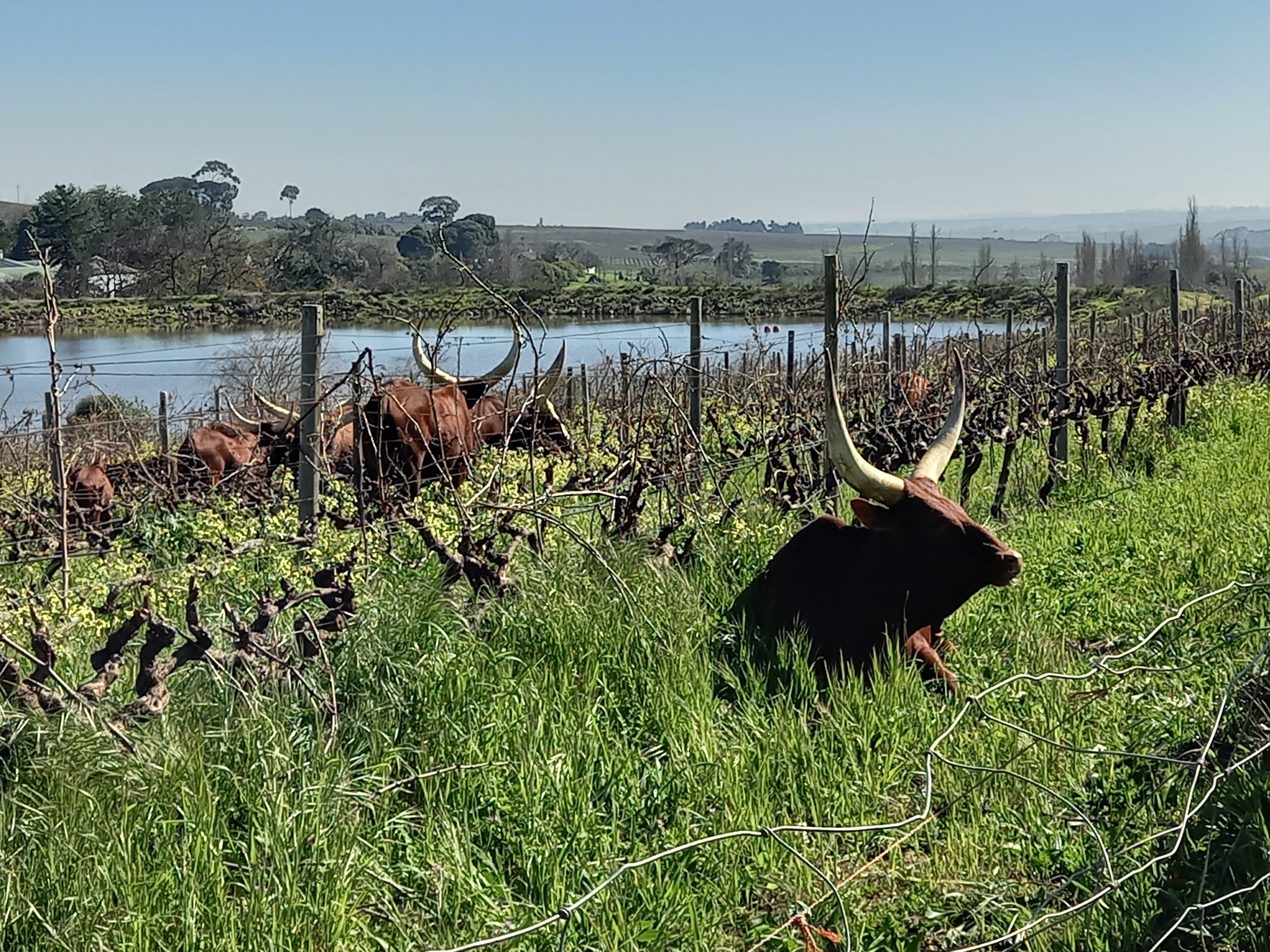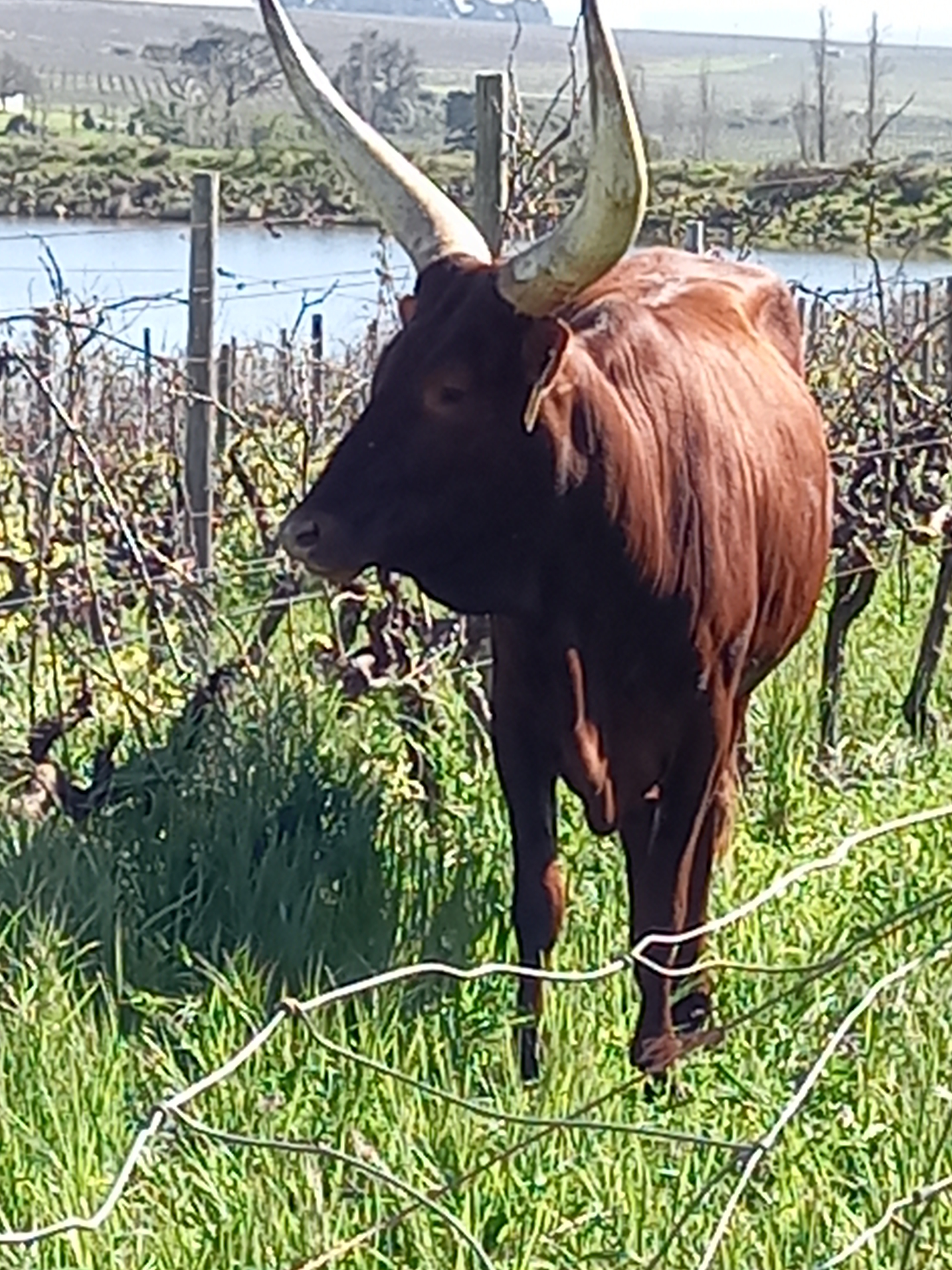It’s a question often asked: “Can you really taste the difference between a range of wines?”. When you’re sat at a table, tasked with assessing 60, 80 or 100 wines in a competition setting, it is fairly easy to distinguish between wines. The reason is simple: tasters generally assess different flights of between eight, 12 and 15 wines at a time. It doesn’t often happen that you have 50 or 60 wines of the same type lined up in front of you.
But even when that does happen, there are distinctions to be drawn. Say there are 50 wines, all Shiraz, for example. Not all will be from the same area or even from the same vintage. There might be 10 from Paarl, 20 from Stellenbosch or whatever – or a third of the flight will be three years old and the rest either one or two. Those variances make for diversity and points of difference – but the average wine consumer is obviously seldom placed in that sort of situation.
At a regenerative viticulture session held at Hartenberg estate in Stellenbosch’s Bottelary area recently, there was a great example of how it is possible – even for the neophyte – to distinguish and differentiate between two wines. They might not know specifically what the differences are, but they can appreciate and recognise that they are indeed dissimilar. The fascinating thing was what caused the distinction in the wines presented by long term Hartenberg cellar chief Carl Schultz.
Here’s the background: wine A and wine B were from the same vineyard, they were from the same grape type – both shiraz. Picked on the same day, at the same stage of ripeness. Once they hit the cellar they were treated identically in terms of winemaking.
Visually, wine A was just a fraction brighter and more purple than wine B. Wine A was also just a smidgeon fresher, brighter and fractionally displaying a higher acidity that its counterpart. Schulz then presented the chemical analyses of the two wines. Wine A was a half a percent lighter in alcohol, while residual sugar and acidity had almost nothing to separate them at 1.8g/litre vs 1.77 and 6.5 vs 6.37g/litre respectively.
What was the difference? Wine A was the vineyard portion which had ruminants grazing the cover crop between the rows of grapes, pooping and peeing as they munched – and Wine B had no ruminant influence.
Hartenberg introduced cattle to the farm in 2017 but the impact on soil health and nematode diversity was backed up by a Stellenbosch University study. The farm’s viticulturist Wilhelm Joubert is an enthusiastic supporter of regenerative agriculture and is fast on his way to becoming the “go to” guy for regenerative viticulture. Joubert took soil samples and used nematodes – microscopic worms that feed on plant roots – as bio-indicators of soil health. The diversity and density of nematodes increased as soon as animals – in this case Ankole cattle – were introduced. And it wasn’t just worms either. Schultz pointed out that dung beetles had become a common sight in the vineyards, happily digging into cow pats, tunnelling down into the soil and depositing little dung balls. That in turn breaks up the soil structure and allowed both roots and water deposits to penetrate deeper, while also improving carbon sequestration.
“In the first year since we brought animals into the vineyard, we were impressed by the rapid improvement in the measured soil biodiversity and -health,” said Schultz. “The question was: What happens to the grapes from vineyards where cattle graze as opposed to the vineyard without cattle? We had to think about what it means for the wine and if this would display noticeable differences.”
Although Schultz is adamant that it is still too early to make definitive inferences, there is a clear indication that the two portions are producing markedly different wines; where the wine from the grazed portion of the vineyard block is elegant, fresh, and red fruit-driven, the control is weightier and more structured perhaps with hints of darker berry fruits and riper top notes.
Anecdotally, having done this exercise and presented this test to at least 10 separate groups over the past year, Schultz said it’s apparent that some folks, winemakers among them!, will confidently assert that he’s pulled switcheroo! “Winemakers will tell me it’s not the same wine, but the irony is that it is!
“Both are super, but they are different. That means you are giving the winemaker another colour on his palette with which to paint, or another building block in a blend, which is a good thing.”
So, yes, even when it’s not in a competition setting, it’s possible to distinguish differences. But this exercise is about more than that. It’s about future proofing, improving the soil health, improving diversity of both nature and place, trying to mitigate against the impending impact of climate change which will affect all wine farms – and not just those in the Western Cape – and also ensuring that the business remains viable.
“Creating a superb wine is a fortunate by-product, but we feel we have not just a sustainable future responsibility, from both an ecological and a business point of view, but the need to regenerate, rejuvenate the still little understood life forces of our terroir – i.e. one step beyond,” Schultz said.
Fiona McDonald
Captions:
The numbers don’t lie. Carl Schultz presenting the analyses of the two “same” wines.

Ankole cattle with their large horns are immediately distinctive but Hartenberg farms with pint-sized Dexter as well as Ngunis.

